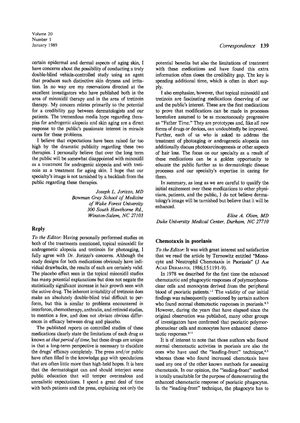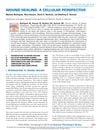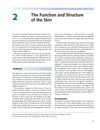Chemotaxis in Psoriasis
January 1989
in “
Journal of The American Academy of Dermatology
”
chemotaxis polymorphonuclear cells monocytes psoriasis phagocytic responses leading-front technique lower surface counts method radioactive Cr51 assay chemoattractants phagocytic stimuli psoriatic keratinocytes peripheral blood phagocytes white blood cells skin disease cell movement cell adherence radioactive assay

TLDR Psoriasis patients have immune cells that respond more strongly to signals and stimuli due to an intrinsic cellular defect.
The document discusses the chemotactic responses of polymorphonuclear cells and monocytes in psoriasis patients. In 1978, the authors first reported enhanced chemotactic and phagocytic responses in these cells from psoriatic patients, which was later confirmed by other studies, despite some initial skepticism. The document critiques the "leading-front" technique for measuring chemotaxis, suggesting it is unsuitable due to increased cell adherence in psoriasis, which could neutralize the enhanced chemotactic response. Instead, the "lower surface counts" method and the radioactive Cr51 assay, which show increased chemotaxis, are preferred. The findings indicate that the enhanced chemotactic activity of psoriatic phagocytes is likely due to a primary, intrinsic cellular anomaly, similar to the defect in psoriatic keratinocytes. This anomaly results in increased sensitivity to chemoattractants and phagocytic stimuli, independent of the presence of chemotactic products in circulation or the extent of skin disease. The document reinforces the idea that the altered function of psoriatic peripheral blood phagocytes is a fundamental characteristic of the condition.


